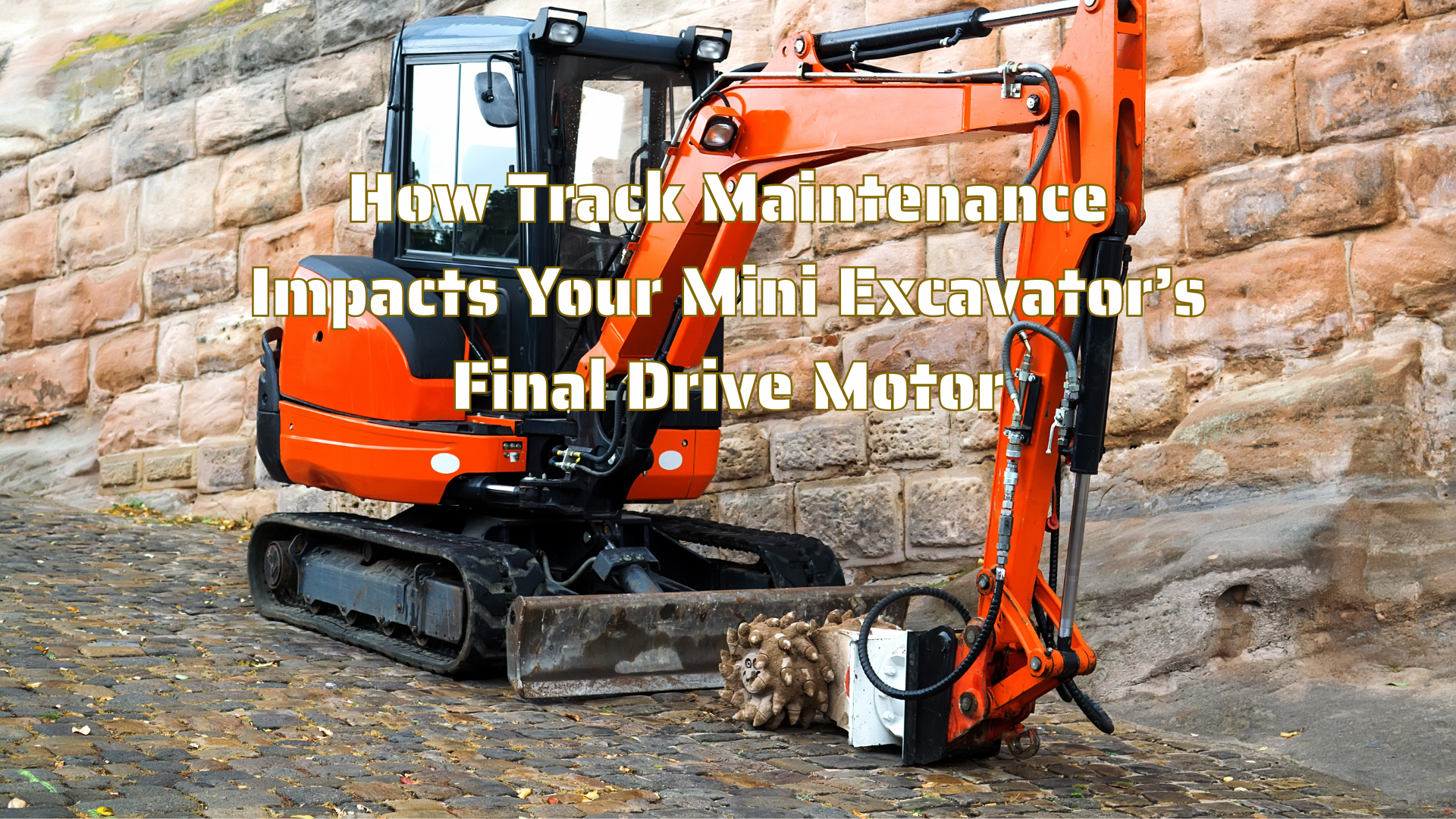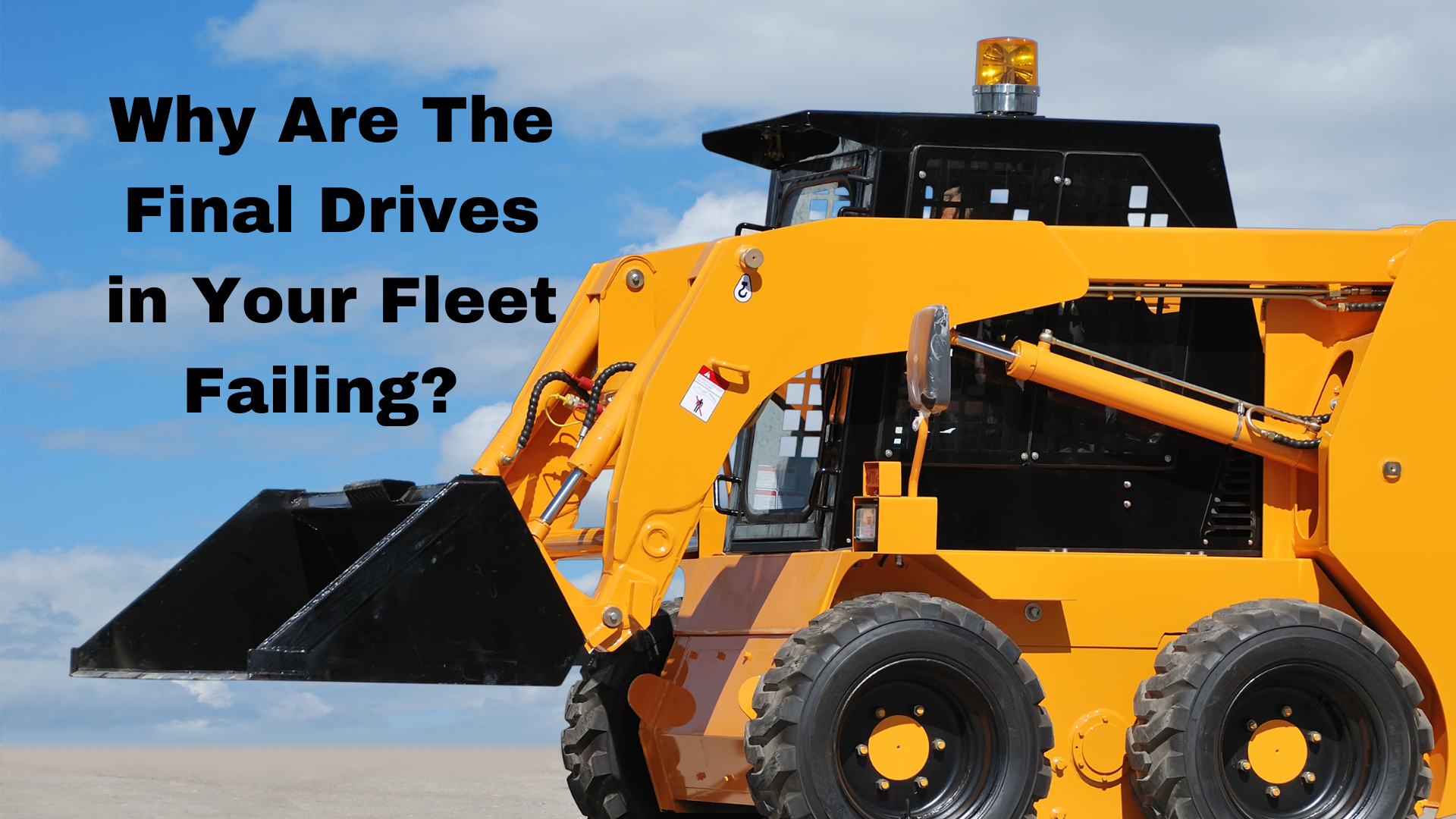Hints and Tips to Extend the Life of Your Excavator Undercarriage
Aug 13th 2018
Importance of Your Excavator’s Undercarriage
Did you know the undercarriage of your excavator could be responsible for up to 50% of your maintenance costs? Proper care of your undercarriage can extend the life of your final drive or travel motor, saving you thousands of dollars in repair as well as unnecessary down time. Here are some hints and tips for taking good care of that undercarriage. You probably already know them, but it never hurts to be reminded.
Track Tension
Incorrect track tensions can contribute to wear and stress on the key components of your excavator. If the track tension is too tight, it will cause unnecessary stress on the undercarriage and drive components while wasting horsepower. If the track tension is too loose, the bushings and sprockets are going to experience excessive wear. It should be slackened for muddy environments and tightened for hard ground and rock conditions. Before you check and set the tension, though, you should run the machine about 30 minutes to give it a chance to acclimate to the working conditions. Then remember to check the track tensions about every 10 to 15 hours of use.
Shoe Width
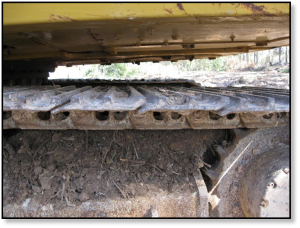
Experts advise that you should use the narrowest shoe that still provides the function and flotation that you need. Keep in mind that if the shoe is too narrow the machine will sink and there will be a tendency for debris like mud, dirt, and leaves to pack tightly on the roller frame. However, if the shoe is too wide it will be more likely to bend or crack and experience an increase wear. Also, keep in mind that wide shoes aren’t needed when working on hard ground, or around stumps and rocks.
Cleaning
Cleaning out the tracks at the end of the day is not the most pleasant job, but it can certainly contribute to the useful life of your machine and its components, including your final drive or travel motor.
Cleaning out the tracks at actually serves a dual purpose: it prevents debris from freezing or drying on the tracks and makes visual inspection much more productive. Frozen or dried debris will increase the rate of wear, and if they become packed in tightly enough can damage the main seals on your final drive, which in turn can destroy your final drive. The figure below is an example of final drive face seals that were destroyed as a result of lack of undercarriage maintenance.
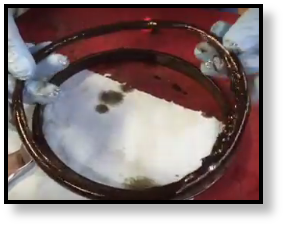
Keep in mind that keeping your tracks clean also helps to minimize fuel usage: a significant build-up debris (e.g., mud) can increase the weight of the machine. A high-pressure hose can be used at regular intervals, in addition to shoveling out the debris daily.
Daily Inspection
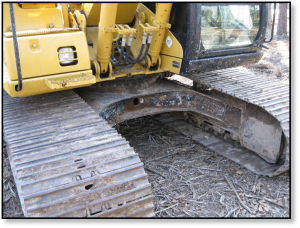
Before starting a shift, do a visual inspection to check for dry joints, loose hardware, abnormal wear patterns, and leaky seals. This should be easy to do if the machine was cleaned off the day before. Some experts recommend a complete undercarriage inspection every 1,000 to 2,000 hours.
Operator Guidelines
Here are some guidelines that apply to whoever is operating the excavator:
- Don’t run the machine at high operating speeds if you don’t have to.
- When going uphill, experts recommended that the final drive motor be at the back of the machine to minimize wear.
- Don’t run the machine in reverse unnecessarily because this can increase bushing and sprocket wear and causes a great deal of undercarriage wear.
- Avoid, as much as is feasible, track spinning, same direction turning, and counter-rotation when working on large jobs.
- Avoid quick, aggressive turns and opt for wider turns.
- Dig over the idler and not over the sprocket – this helps to minimize wear.
- Use ramps or boards when driving over very steep angles
- When working on slopes, alternate your work direction
Conclusion
The undercarriage represents a significant part of your machine investment, and taking good care of the undercarriage will benefit other key components, from the tracks to the final drive motors. Taking the time to perform regular inspections and maintenance can save you thousands in repair costs.




